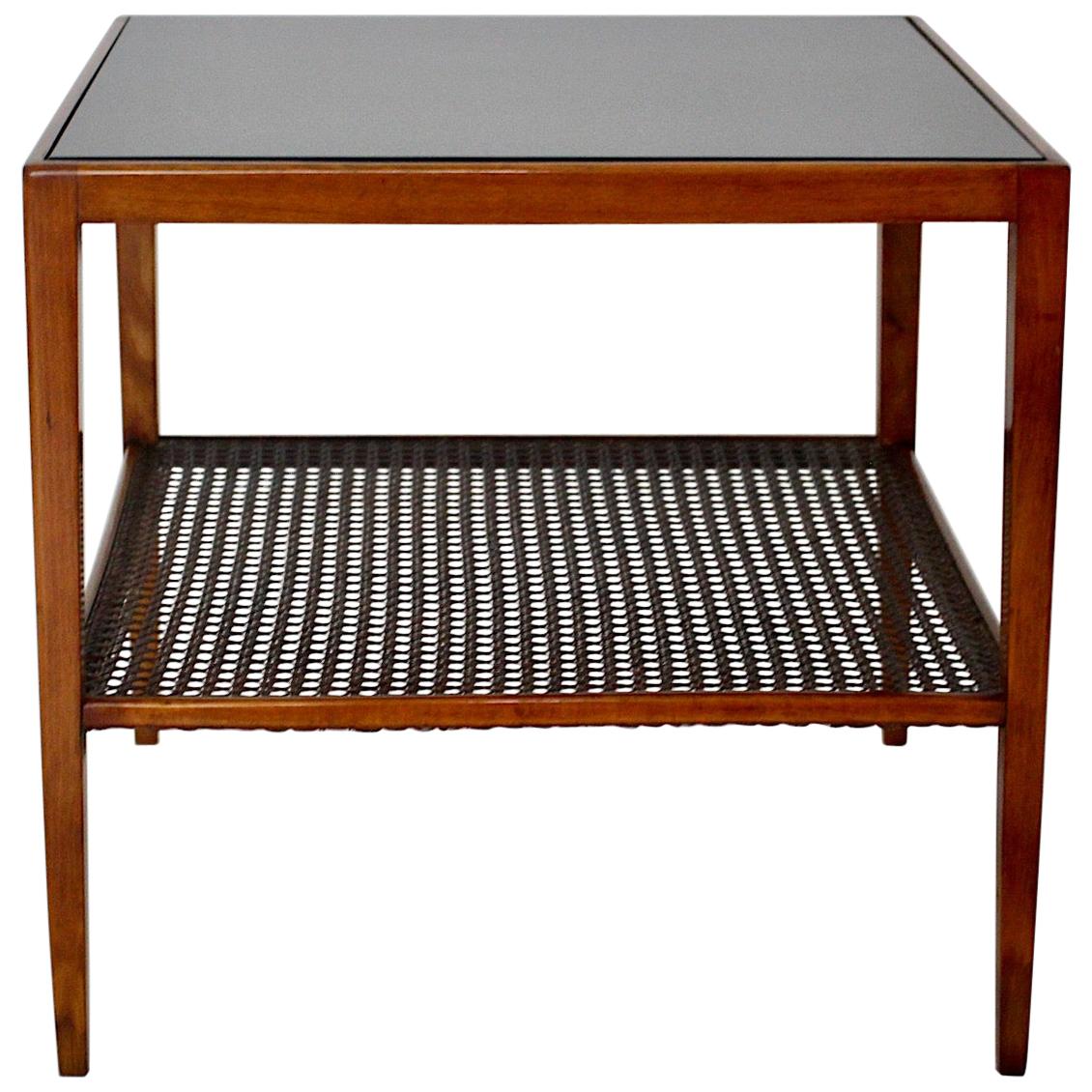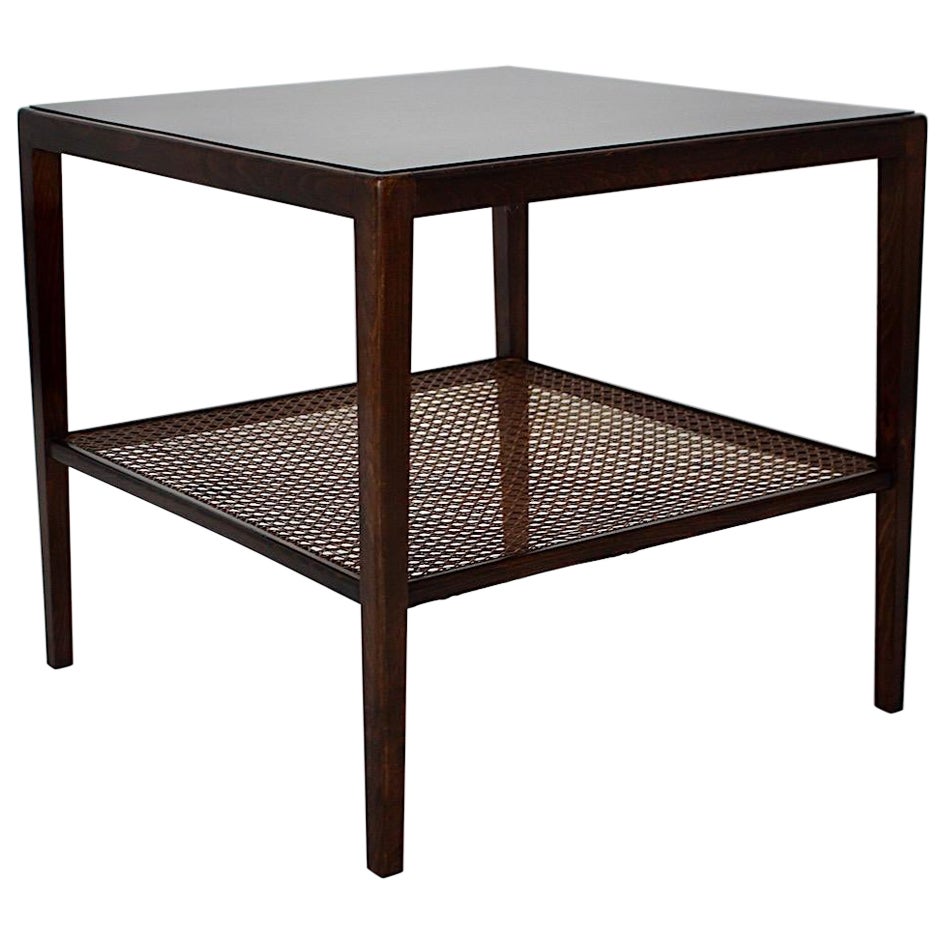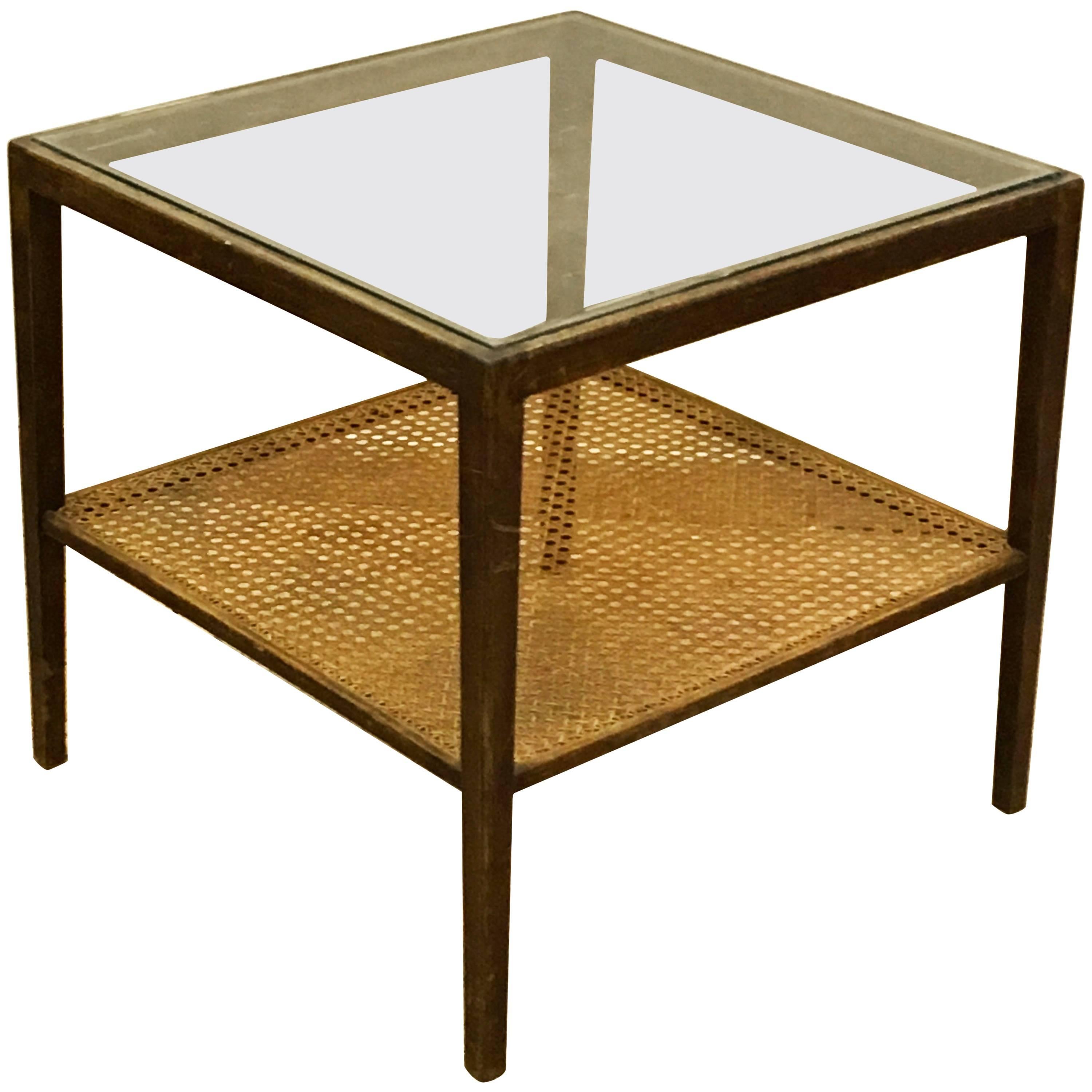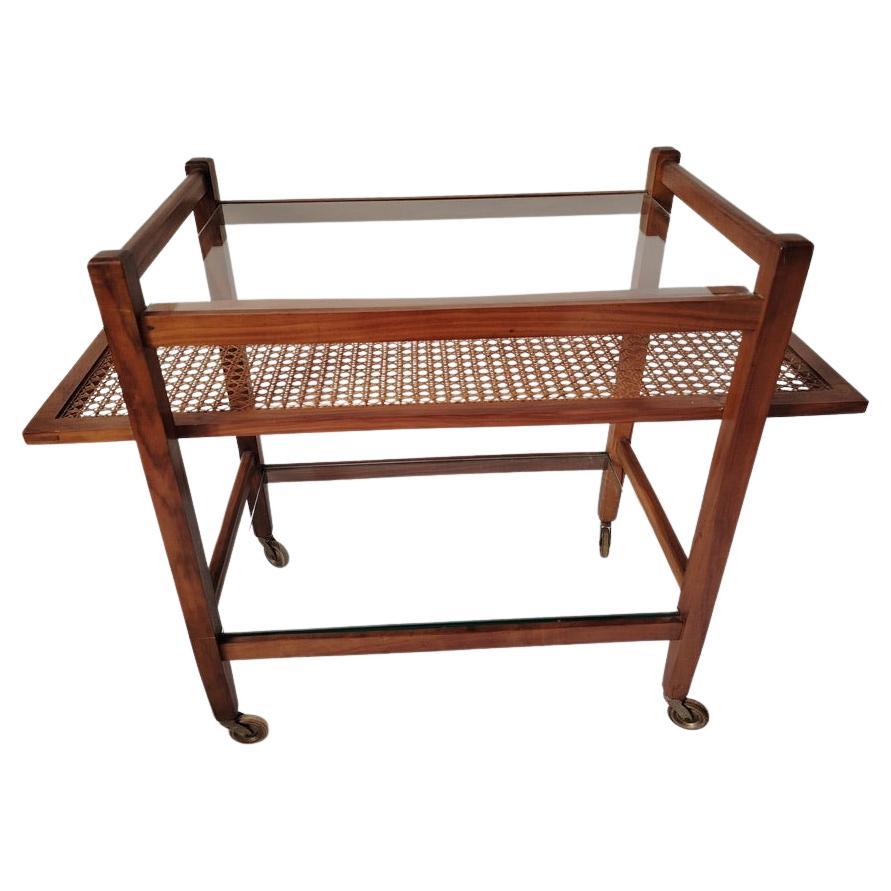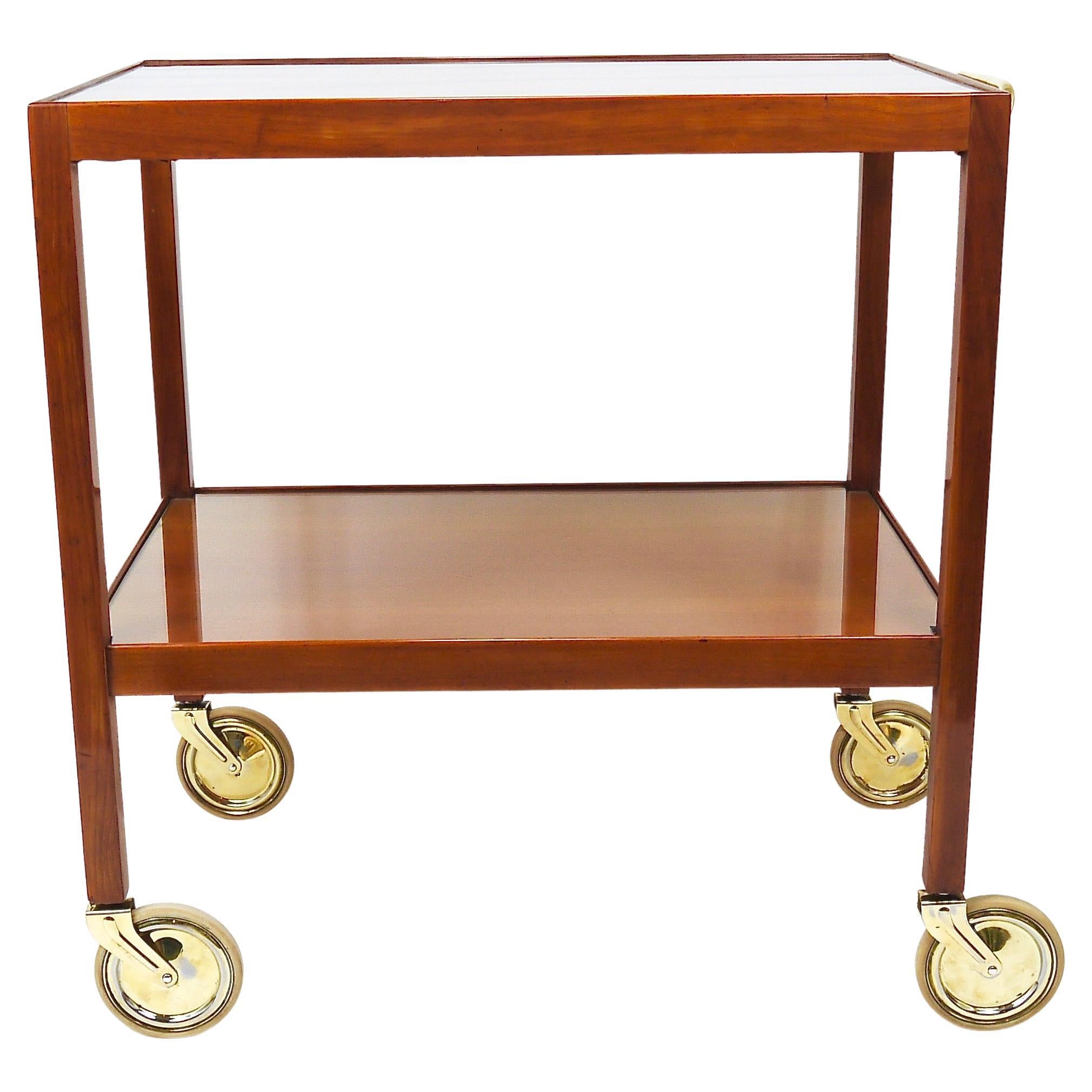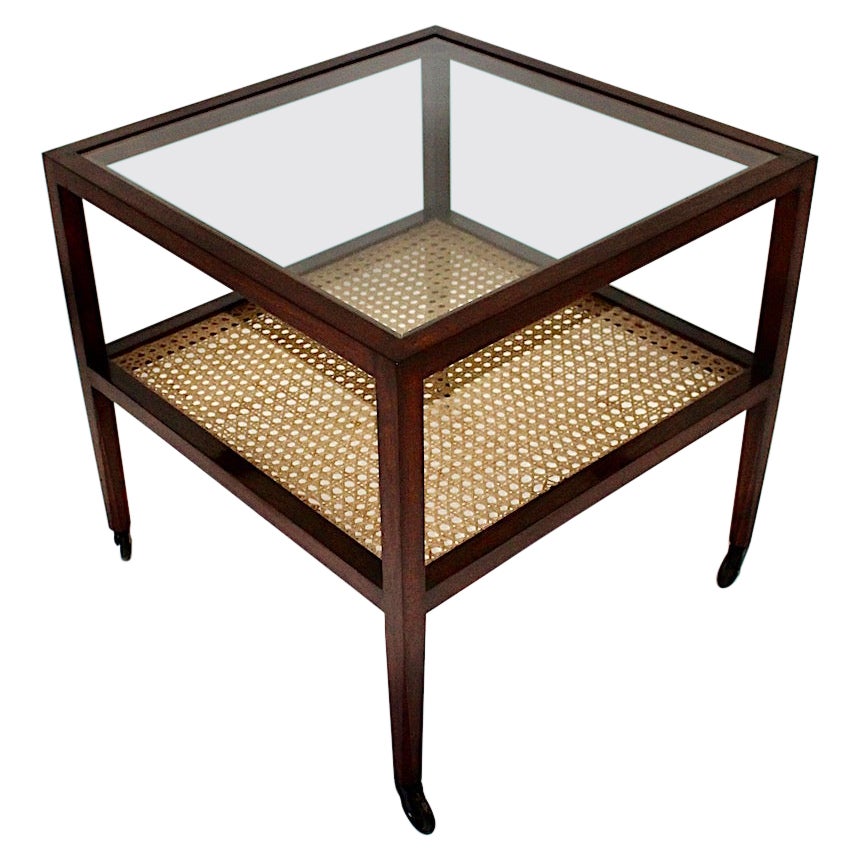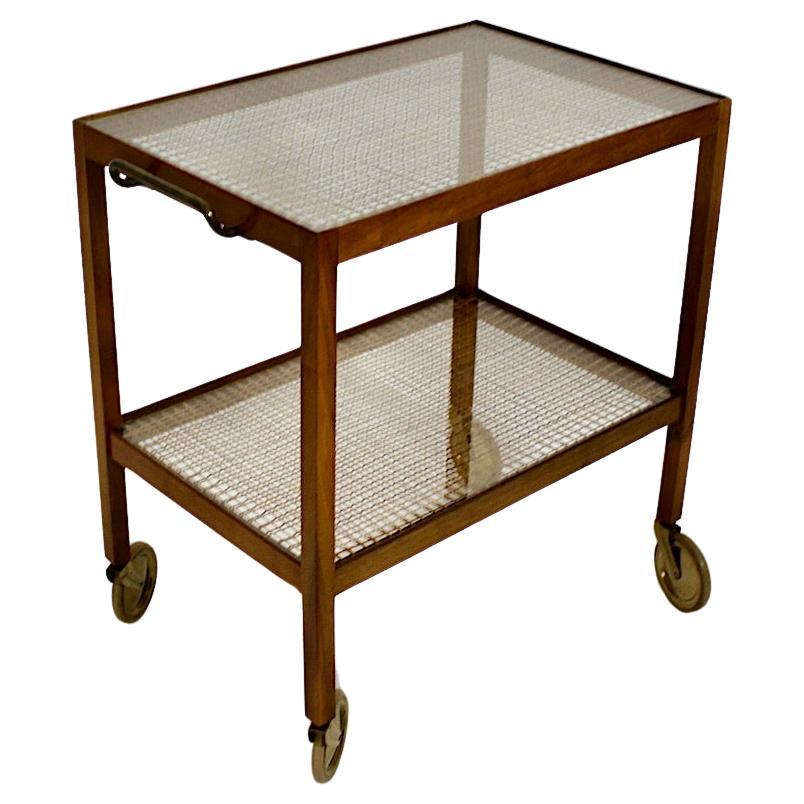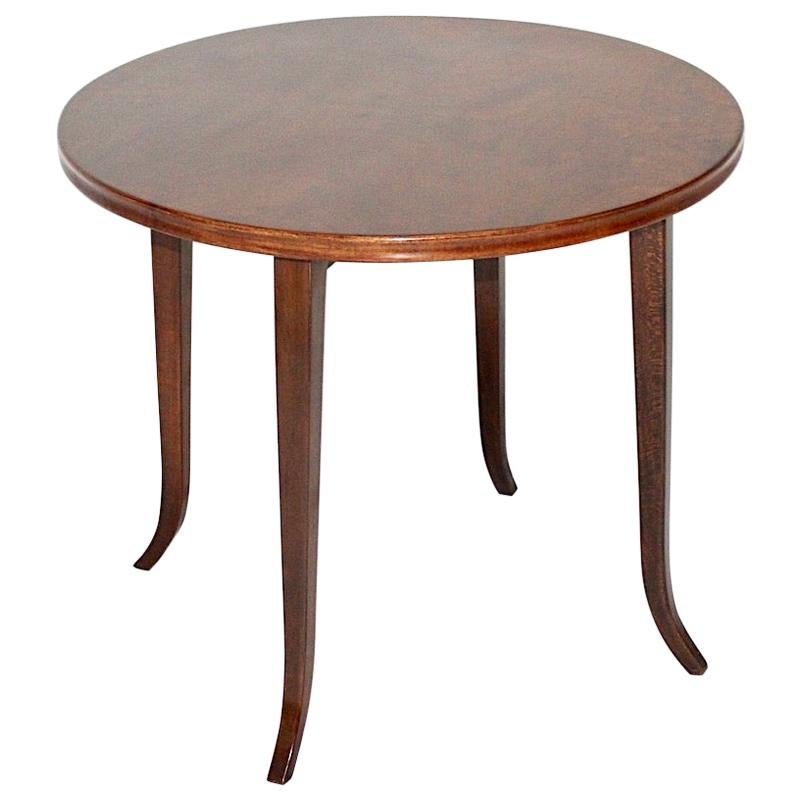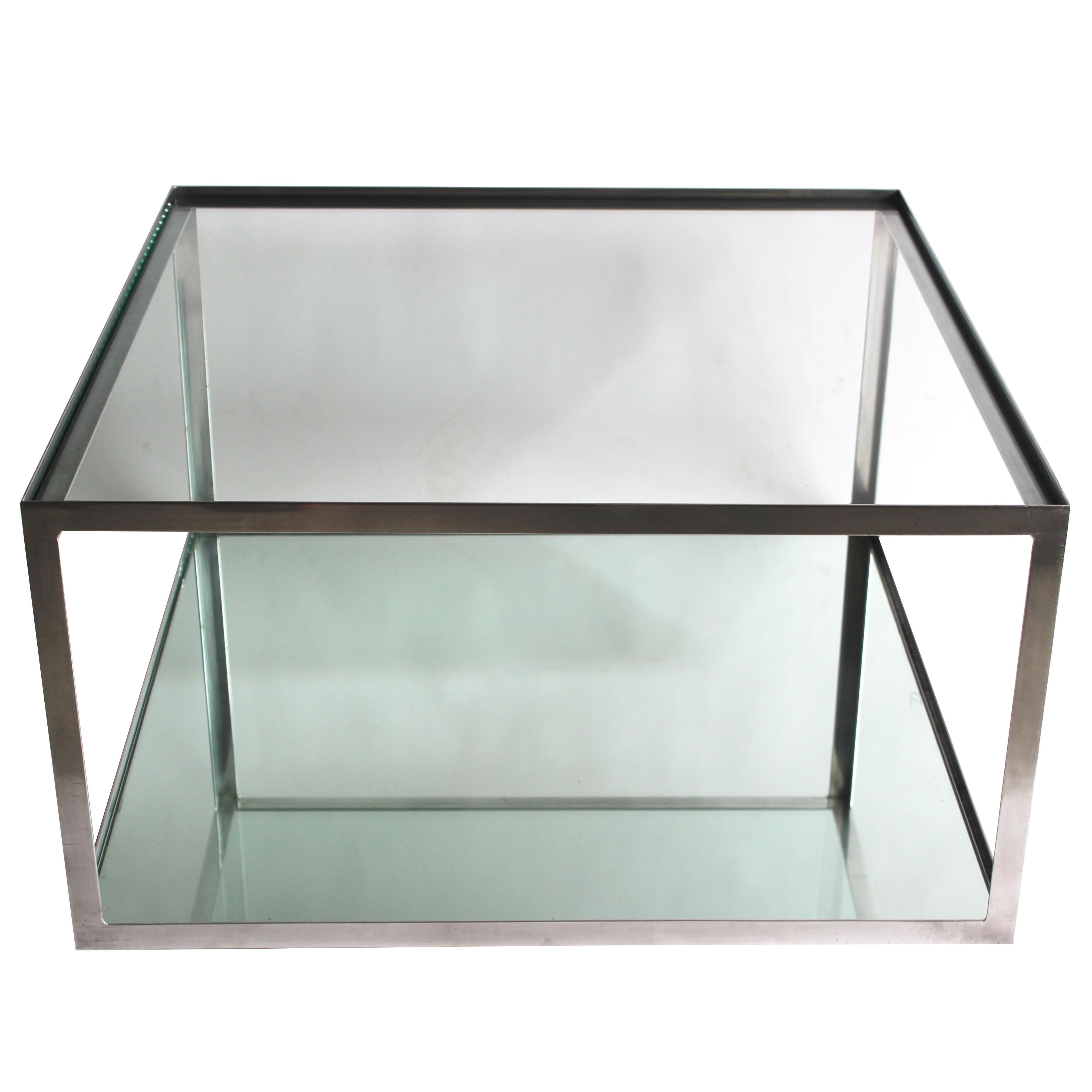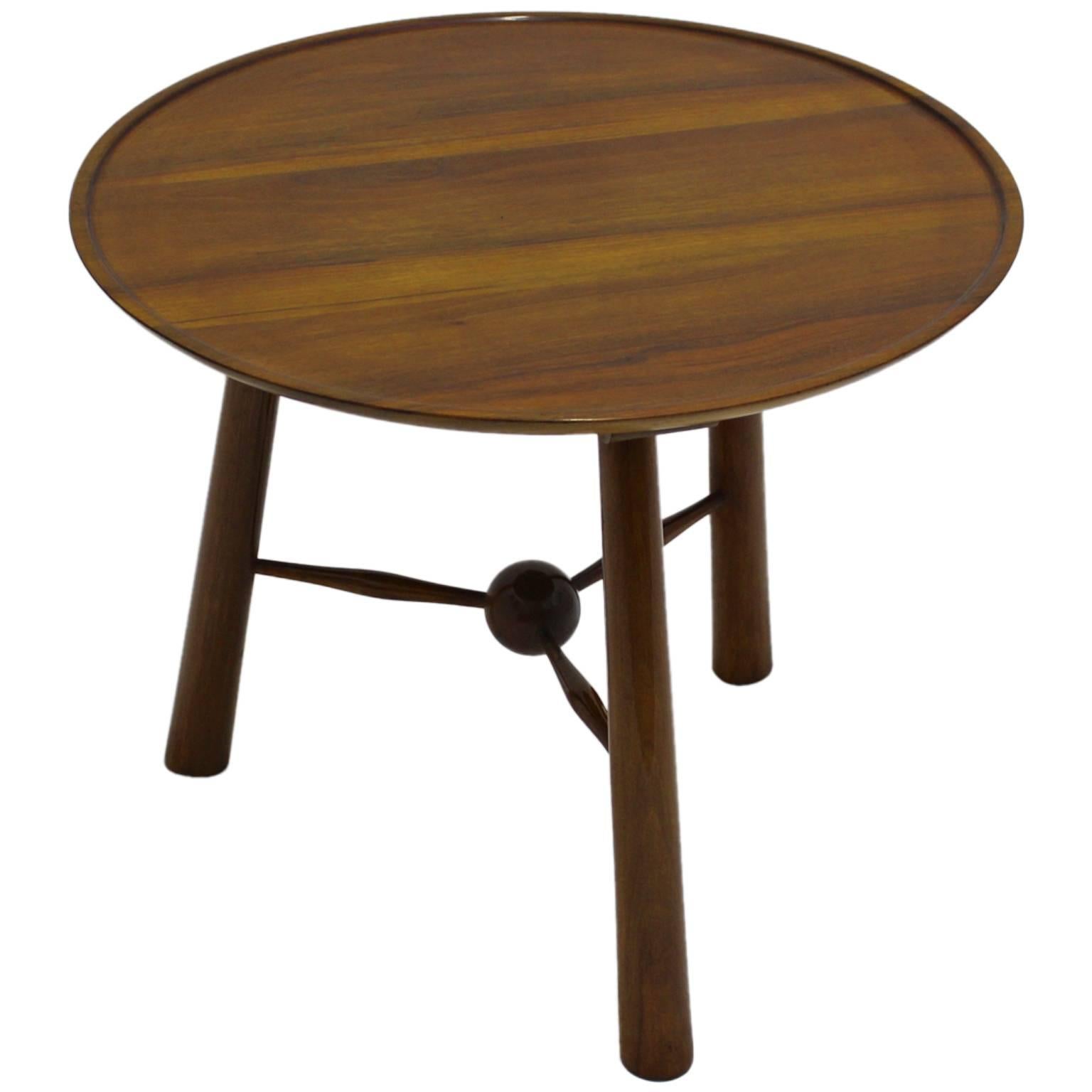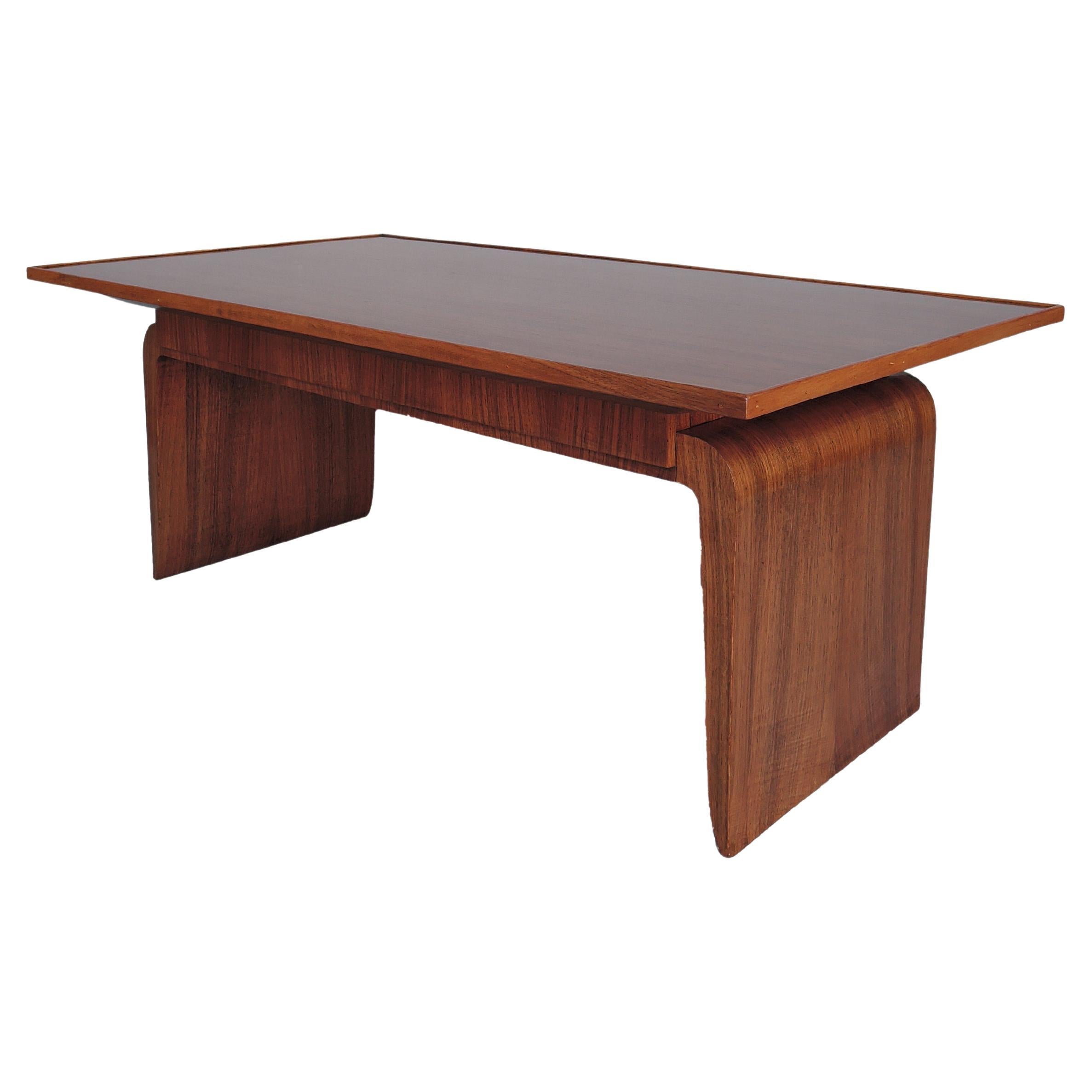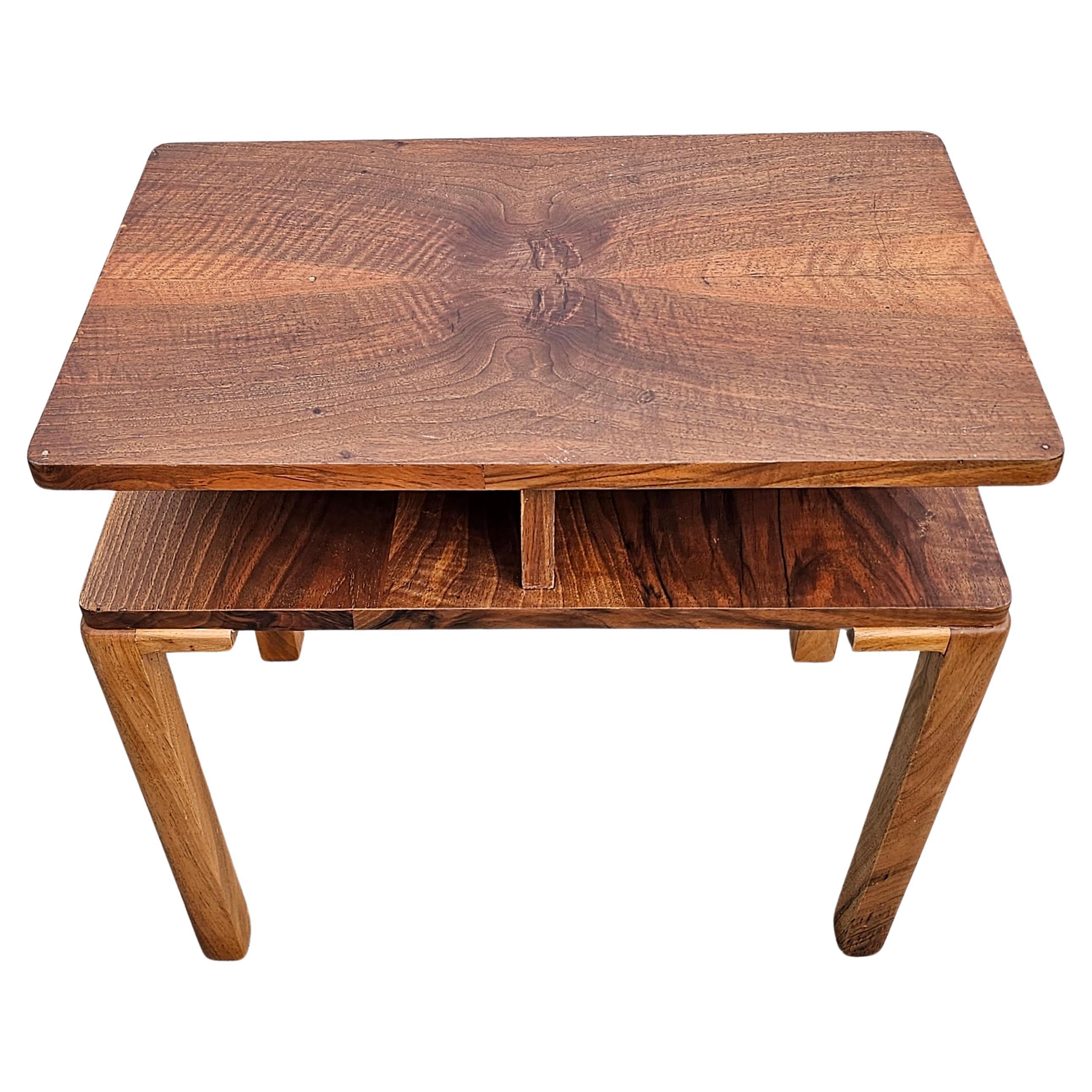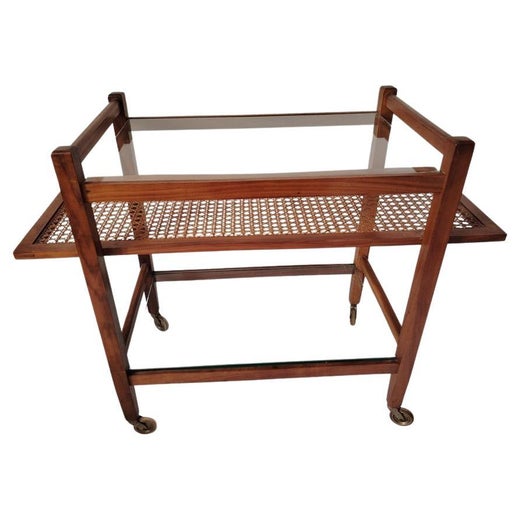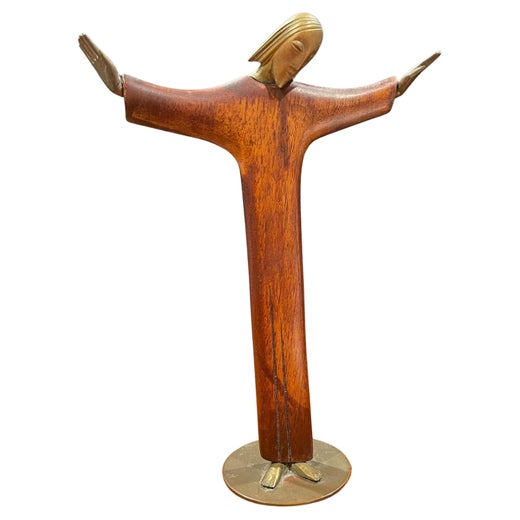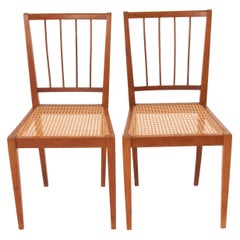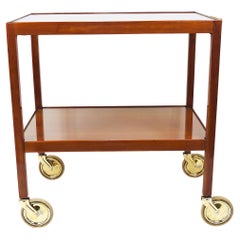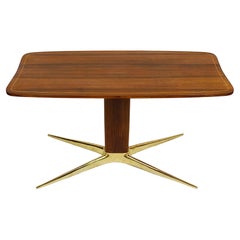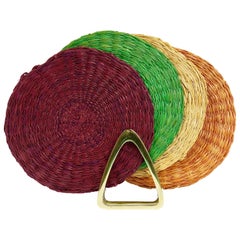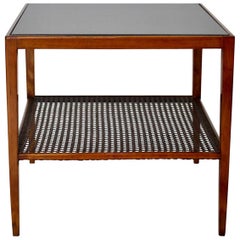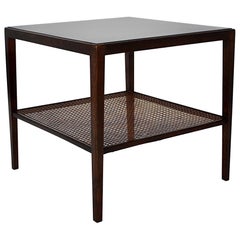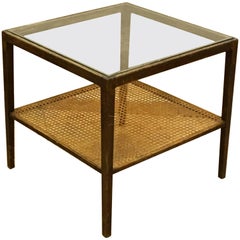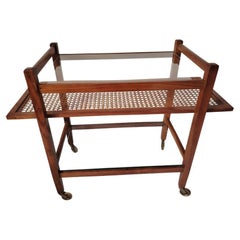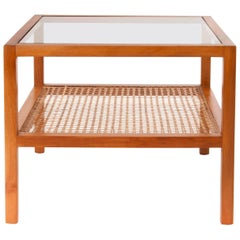
Two-Tiered Werkstätte Hagenauer Coffee Table by Julius Jirasek, Austria, 1930s
View Similar Items
Two-Tiered Werkstätte Hagenauer Coffee Table by Julius Jirasek, Austria, 1930s
About the Item
- Creator:
- Dimensions:Height: 16.5 in (41.91 cm)Width: 20 in (50.8 cm)Depth: 20 in (50.8 cm)
- Style:Mid-Century Modern (Of the Period)
- Materials and Techniques:
- Place of Origin:
- Period:
- Date of Manufacture:1930s
- Condition:Wear consistent with age and use.
- Seller Location:Vienna, AT
- Reference Number:1stDibs: LU1015211187331
Julius Jirasek
Julius Jirasek was an Austrian architect and for many years at the staff by (workshop) Werkstätten Hagenauer. Jirasek studied under Josef Frank and Oskar Strnad at the Kunstgewerbeschule. Jirasek-designed pieces, such as his furniture and utensils, are popular. Also, Jirasek designed two houses for the Wiener Werkbundsiedlung.
Karl Hagenauer
Karl Hagenauer was an important and popular figure in the decorative arts in Vienna in the decades bracketing the Second World War. While primarily a maker of sculptural decorative pieces, Hagenauer — in the same spirit as his peer Carl Auböck— created a wide array of household objects, from barware to office accessories, all designed with wit and a sleek modernist aesthetic.
Hagenauer’s father was a trained metalsmith who founded a bronzewares manufactory that produced decorative metalwork and housewares in both traditional and the then-novel Art Nouveau styles and cast small sculptures based on Old Masters paintings. After studying art and design at Vienna’s School of Applied Arts, where his teachers included architect Josef Hoffmann, a founder of the Wiener Werkstätte, he joined his father’s workshop in 1919 and began crafting items that reflected Hoffman’s modernist aesthetic. In the 1920s and ’30s, he developed an often-imitated style that combines the lithe, lissome lines of Art Nouveau (known in central Europe as Jugendstil) with the simple, unadorned forms of Art Deco. He worked primarily in brass — both polished and nickel-plated — as well as wood.
In addition to domestic items such as smoking accoutrements, teapots, trays, bowls, candleholders and tableware, Hagenauer produced a wide array of small-scale sculptures. (His younger brother, Franz— who took over the family business when their father died — was also a noted sculptor, with a style that could be described as Art-Deco-meets-Brancusi.) Karl’s sculptures fall into two main groups: humorous and whimsical animal and character figures that will remind many of the work of artist Tom Otterness and sleek, stylized animal and human forms, many with an African theme — an “exotic” connotation that was a 20th-century remnant of colonialism. As you will see from the items on offer, Karl Hagenauer was an artist-designer of great talent and many moods: affable, stylish and practical.
More From This Seller
View AllVintage 1930s Austrian Mid-Century Modern Chairs
Wicker, Cane, Wood
Mid-20th Century Austrian Art Deco Carts and Bar Carts
Brass
Mid-20th Century Austrian Mid-Century Modern Coffee and Cocktail Tables
Brass
Mid-20th Century Austrian Mid-Century Modern Barware
Brass
Mid-20th Century Austrian Mid-Century Modern Decorative Bowls
Brass
Mid-20th Century Austrian Mid-Century Modern Candelabras
Brass
You May Also Like
Vintage 1930s Austrian Art Deco Coffee and Cocktail Tables
Cane, Glass, Beech
Mid-20th Century Austrian Mid-Century Modern Sofa Tables
Formica, Beech
Vintage 1930s Austrian Modern Side Tables
Cane, Glass, Walnut
Vintage 1950s Austrian Modern Side Tables
Cane, Glass, Walnut
Vintage 1950s Austrian Art Deco Coffee and Cocktail Tables
Walnut
Vintage 1930s Austrian Art Deco Carts and Bar Carts
Brass
